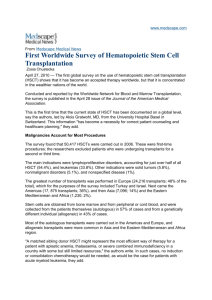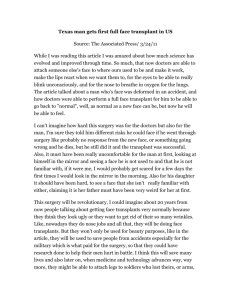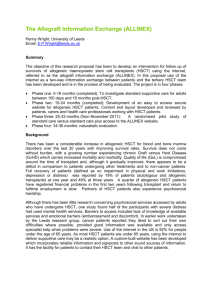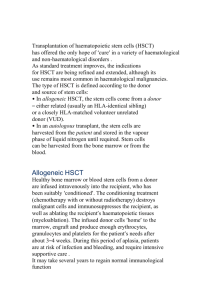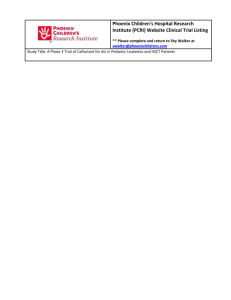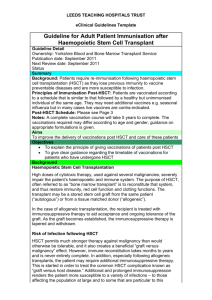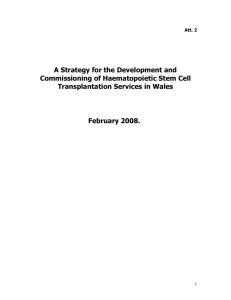Media Release
advertisement
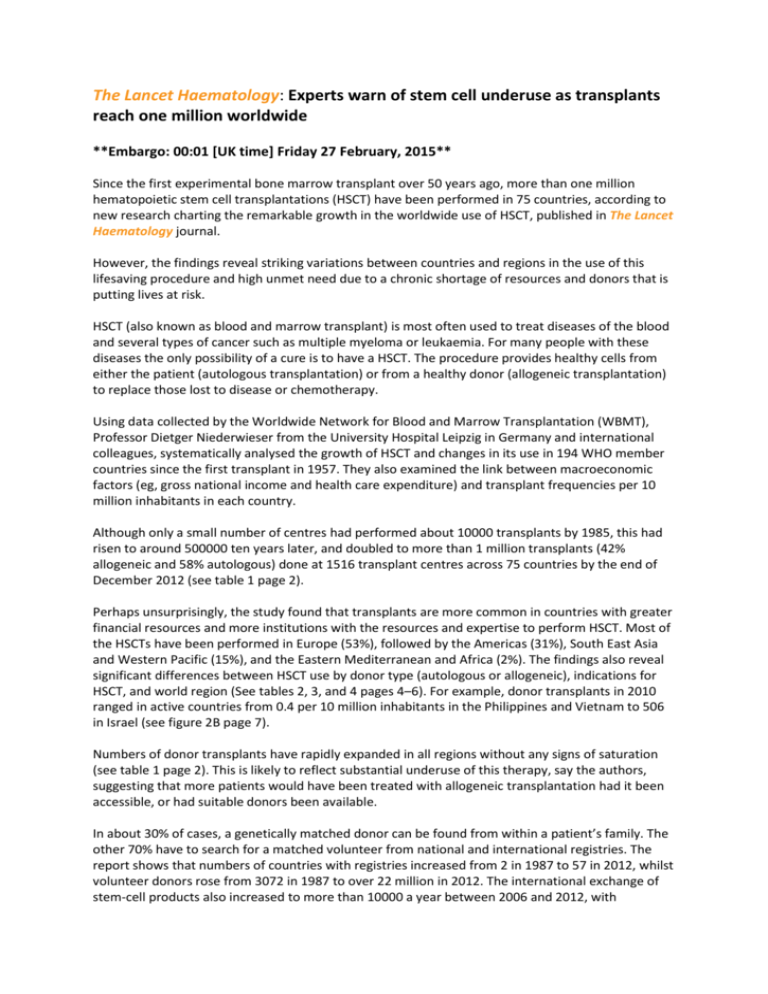
The Lancet Haematology: Experts warn of stem cell underuse as transplants reach one million worldwide **Embargo: 00:01 [UK time] Friday 27 February, 2015** Since the first experimental bone marrow transplant over 50 years ago, more than one million hematopoietic stem cell transplantations (HSCT) have been performed in 75 countries, according to new research charting the remarkable growth in the worldwide use of HSCT, published in The Lancet Haematology journal. However, the findings reveal striking variations between countries and regions in the use of this lifesaving procedure and high unmet need due to a chronic shortage of resources and donors that is putting lives at risk. HSCT (also known as blood and marrow transplant) is most often used to treat diseases of the blood and several types of cancer such as multiple myeloma or leukaemia. For many people with these diseases the only possibility of a cure is to have a HSCT. The procedure provides healthy cells from either the patient (autologous transplantation) or from a healthy donor (allogeneic transplantation) to replace those lost to disease or chemotherapy. Using data collected by the Worldwide Network for Blood and Marrow Transplantation (WBMT), Professor Dietger Niederwieser from the University Hospital Leipzig in Germany and international colleagues, systematically analysed the growth of HSCT and changes in its use in 194 WHO member countries since the first transplant in 1957. They also examined the link between macroeconomic factors (eg, gross national income and health care expenditure) and transplant frequencies per 10 million inhabitants in each country. Although only a small number of centres had performed about 10000 transplants by 1985, this had risen to around 500000 ten years later, and doubled to more than 1 million transplants (42% allogeneic and 58% autologous) done at 1516 transplant centres across 75 countries by the end of December 2012 (see table 1 page 2). Perhaps unsurprisingly, the study found that transplants are more common in countries with greater financial resources and more institutions with the resources and expertise to perform HSCT. Most of the HSCTs have been performed in Europe (53%), followed by the Americas (31%), South East Asia and Western Pacific (15%), and the Eastern Mediterranean and Africa (2%). The findings also reveal significant differences between HSCT use by donor type (autologous or allogeneic), indications for HSCT, and world region (See tables 2, 3, and 4 pages 4–6). For example, donor transplants in 2010 ranged in active countries from 0.4 per 10 million inhabitants in the Philippines and Vietnam to 506 in Israel (see figure 2B page 7). Numbers of donor transplants have rapidly expanded in all regions without any signs of saturation (see table 1 page 2). This is likely to reflect substantial underuse of this therapy, say the authors, suggesting that more patients would have been treated with allogeneic transplantation had it been accessible, or had suitable donors been available. In about 30% of cases, a genetically matched donor can be found from within a patient’s family. The other 70% have to search for a matched volunteer from national and international registries. The report shows that numbers of countries with registries increased from 2 in 1987 to 57 in 2012, whilst volunteer donors rose from 3072 in 1987 to over 22 million in 2012. The international exchange of stem-cell products also increased to more than 10000 a year between 2006 and 2012, with substantial differences between countries in the amount of stem cells they import or export (see figure 2C page 7). Despite these increases there are still too many patients who are unable to find a suitable donor. At any time around 1800 people in the UK are waiting for a blood stem cell donation, and over 37000 people are waiting worldwide. Moreover, less than half of the people in the UK diagnosed with a blood cancer ever find a suitable donor [1]. According to Professor Niederwieser, “Patients, many of them children, are facing a life and death situation. Ultimately they will die if they cannot get the treatment they need. All countries need to provide adequate infrastructure for patients and donors to make sure that everyone who needs a transplant gets one, rather than the present situation in which access remains restricted to countries and people with sufficient resources.”[2] NOTES TO AUTHORS: [1] http://www.deletebloodcancer.org.uk/en/about-blood-cancer and http://www.anthonynolan.org/media/facts-and-stats [2] Quote direct from author and cannot be found in text of Article . For interviews with Article author Professor Dietger Niederwieser, University Hospital Leipzig, Leipzig, Germany please contact him directly on T) +49 341 97 13050 or +49 172 3436202 E) Dietger.Niederwieser@medizin.uni-leipzig.de For full Article and Comment see: http://press.thelancet.com/HSCT.pdf NOTE: THE ABOVE LINK IS FOR JOURNALISTS ONLY; IF YOU WISH TO PROVIDE A LINK TO THIS PAPER FOR YOUR READERS, PLEASE USE THE FOLLOWING, WHICH WILL GO LIVE AT THE TIME THE EMBARGO LIFTS: http://www.thelancet.com/journals/lanhae/article/PIIS2352-3026(15)000289/abstract Caroline Brogan Media Relations Assistant The Lancet journals 125 London Wall London EC2Y 5AS Phone: +44 (0) 20 7424 4249 Mobile: +44 (0) 7500 761363 Email: c.brogan@lancet.com
